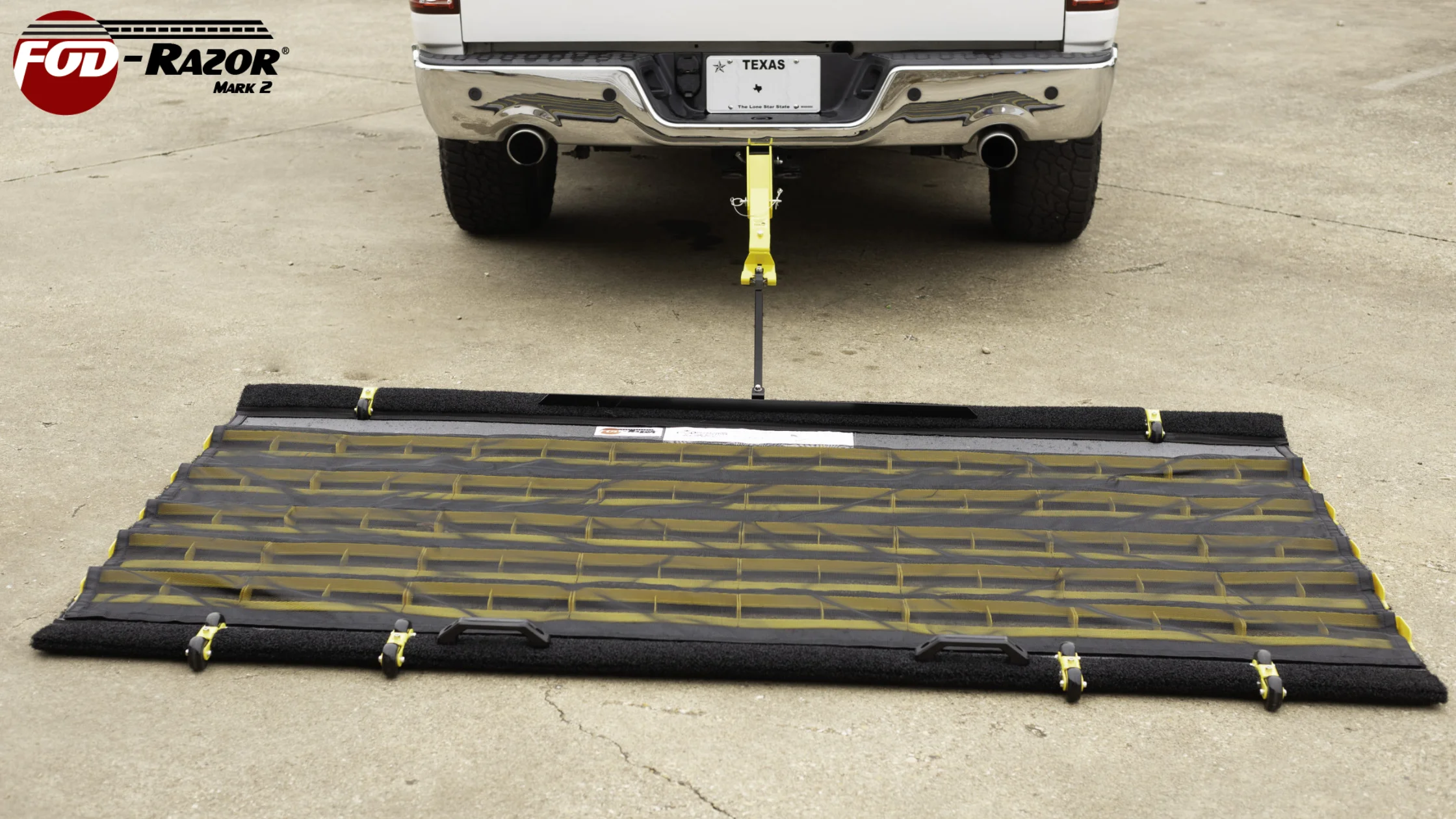Safety First: Why Autumn Debris Matters
When the air cools and the trees shed their leaves, autumn brings not only beauty but also hidden risks. For facilities managing aircraft, vehicles, or heavy equipment, this season creates unique challenges tied to Foreign Object Debris (FOD). Leaves, twigs, branches, and storm-driven debris can quickly accumulate, compromising both safety and operational efficiency.
Beyond the immediate visual changes of the season, autumn often signals a period of adjustment for operational routines. By anticipating seasonal variations and preparing early, organizations set themselves up for smoother operations and fewer costly interruptions.
Autumn-Specific Challenges
Unlike other seasons, autumn brings distinct hazards that require special attention. This is especially critical for businesses that operate in open-air environments such as airports, motorsport tracks, helipads, and others. These sites are more exposed to weather and natural elements, making seasonal debris management an essential part of daily operations.
Key autumn challenges include:
- Slippery surfaces: Damp leaves increase the likelihood of accidents on runways, racetracks, and access roads.
- Hidden debris: Fallen foliage conceals screws, nails, or rocks that can puncture tires or damage equipment.
- Storm scatter: Strong winds and heavy rains distribute debris far beyond its source, creating unpredictable hazards across large open spaces.
- Branch falls: Weak or dead limbs are more likely to snap during autumn storms, adding large and dangerous obstructions.
- Rapid buildup: Debris accumulates faster during autumn, requiring heightened monitoring and more frequent cleanup cycles.
For outdoor operations where precision, speed, and safety are paramount, overlooking these seasonal risks can lead to accidents, delays, or costly repairs.
Suggested Resources
Check out our articles on Why Summer is Peak FOD Season or Training Airport Ground Crews to Combat FOD for more great ideas.
Smarter Sweeping: Adjusting Schedules for Autumn
With debris accumulating more quickly in the fall, many facilities find value in making sweeping far more frequent than in other seasons. In practice, this might mean shifting from weekly cleanups to daily sweeps, or in some cases, conducting multiple sweeps during peak days. Runways after a storm, racetracks following an event, or helipads surrounded by trees are all examples where debris can reappear within hours. Even quieter zones benefit from regular attention, since small buildups left unchecked can turn into larger risks over time.
Focus on High-Risk Zones
Some areas are more prone to debris buildup than others. For open-air facilities like airports and racetracks, prioritizing these high-risk areas ensures that crews spend their time where it matters most. A structured inspection routine, combined with timely cleanup, helps reduce downtime and keeps essential pathways clear. This not only protects equipment but also builds confidence that operations will continue smoothly even under unpredictable conditions.
Building Awareness: Training Crews for Autumn
People remain the strongest safeguard against autumn debris hazards. Crews trained to recognize seasonal risks and act promptly are invaluable. Regular FOD Walks, where teams systematically collect visible debris, reinforce awareness and teamwork. Feedback sessions and access to FOD Awareness training resources help foster a culture of vigilance and responsibility.
Advanced Tools: Why the FOD-Razor® Stands Out
While sweeping and manual checks remain important, specialized tools bring a higher level of efficiency and reliability. The FOD-Razor® is particularly well-suited where debris management must be both thorough and cost-effective. The tool has been designed with flexibility in mind; crews can deploy it rapidly after storms or scheduled events, ensuring surfaces are returned to safe conditions without delays. Its simple yet robust design allows it to function consistently in a wide range of conditions, reducing the strain on staff and resources.
Benefits of the FOD-Razor®
- Captures over 98% of debris, including small or nearly invisible objects.
- Functions effectively on a variety of surfaces, from concrete and asphalt to mixed-use grounds.
- Operates without fuel or external power, lowering costs and environmental impact.
- Allows for fast deployment, ensuring quick recovery after weather events or heavy use.
- Built to be low-maintenance and durable, minimizing downtime and repair expenses.
- Offers a proven track record in facilities worldwide, making it a trusted choice for critical operations.
By incorporating the FOD-Razor® into seasonal management strategies, facilities can move beyond reactive cleanup and toward proactive prevention, ensuring that autumn’s hazards are controlled before they interfere with day-to-day operations.
Final Word: Turning Challenges into Opportunities
Autumn’s falling leaves and unpredictable storms don’t have to disrupt operations. With thoughtful planning, the season can become an opportunity to strengthen safety routines, refine operational discipline, and adopt more efficient tools. By adjusting sweep schedules, maintaining awareness, training crews effectively, and deploying advanced solutions like the FOD-Razor®, facilities not only prevent accidents but also improve overall resilience. The result is safer operations, stronger asset protection, and fewer costly interruptions. In many ways, autumn becomes a chance to prove preparedness and turn seasonal challenges into long-term gains.
For tailored solutions this autumn, explore our Razors and Sweepers at https://www.fodcontrol.com/ or contact us.



